
Interview with ceramic artist Kazuyoshi Kitagawa (Tajimi, Gifu Prefecture)
Share
We visited the studio of Kazuki Kitagawa, who creates ceramics in Tajimi, Gifu Prefecture, with the theme of "the boundary between craft and product." He is the only ceramic artist represented by OMBLE who creates his pottery using casting, and his works are appealing in that they combine the uniqueness of handmade products with the beauty of uniformity and consistency.
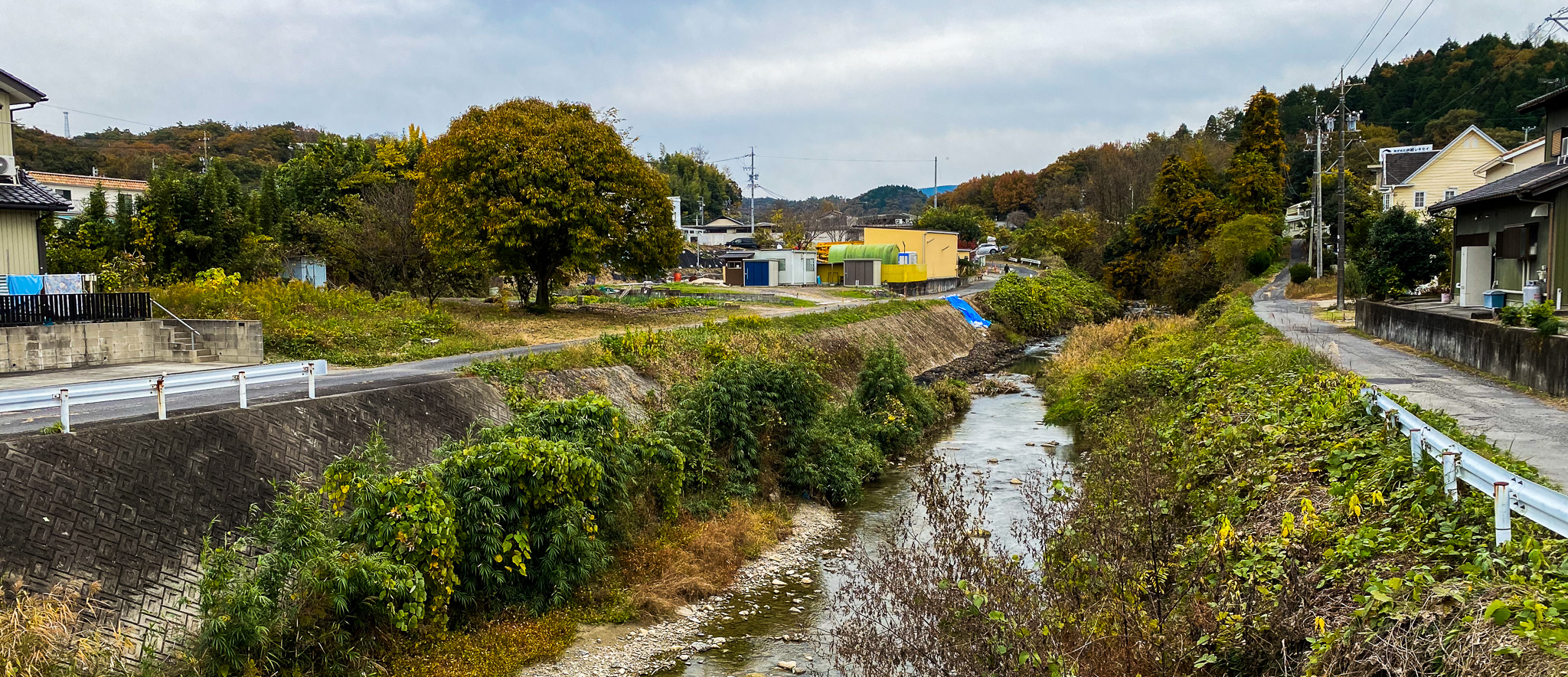
Encounter with pottery
I was born in Kyoto and lived there until I graduated from university with a degree in design. After that, I graduated from the Tojiki Design Institute in Tajimi, where I still make pottery.
After graduating from the Design Institute, I worked for a ceramics trading company in Tajimi for four years to deepen my knowledge. I left the company and went independent to focus on ceramics, but the COVID-19 pandemic hit shortly after, and ceramics fairs and events decreased dramatically. I continued to make pottery while taking on work from manufacturers who were renting space. Thanks to this, I now have more clients and can make a living solely from ceramics.
How is it made?
I create pottery using a technique called "casting," which involves repeatedly creating pieces of the same shape and size using plaster molds.
First of all, you need "slip". Slip for casting is a liquid clay made by mixing clay, water, and sodium silicate thoroughly in a mixer. It is completely different from the method of making pottery using a potter's wheel, and there is no need to worry about air getting into the clay.
The clay is purchased in bulk, in 500kg units, as white porcelain cakes. It is quite cheap to buy wholesale. This is one of the great things about Tajimi. The clay is torn into pieces and soaked in water for about a day. Mixing in a small amount of sodium silicate makes it flow and easier to cast. By adding pigments to it, various colors can be created. There are about 15 colors currently in use, and some are created by mixing pigments together. Scoop up the slurry with a ladle and adjust it so that it flows down like a thread. If you leave it, it will dry out and evaporate, so you need to add a small amount of water each time to adjust it. This is the "slurry". By mixing multiple pigments, you can make slurry such as "Marble".
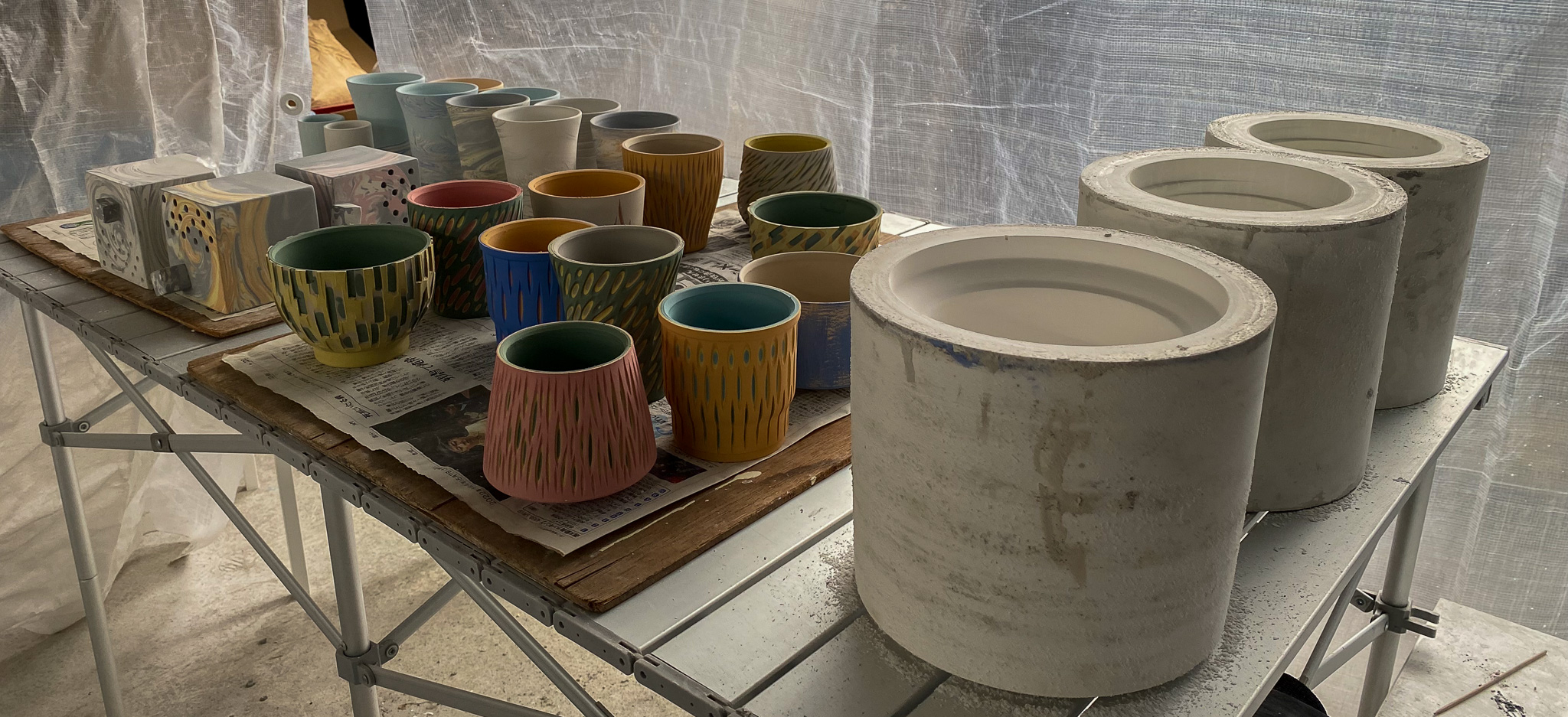
The difference between porcelain and pottery
Porcelain and pottery have different ingredients: porcelain is 30% feldspar, 40% silica, and 30% clay. Pottery is 10% feldspar, 40% silica, and 50% clay. In other words, if you add more feldspar, it will melt well and become porcelain, and if you add less, it will become pottery.
Feldspar and silica are the components that make up glass, and porcelain contains more glass than pottery, which means that pottery has a water absorption rate that porcelain does not.
Ceramics have air bubbles and little glass, so they do not let light through, while porcelain is more than half glassy, so it lets light through. I think porcelain is somewhere between glass and ceramic. Porcelain is close to glass, but I feel it also has the good qualities of ceramic.
Porcelain is fired at the highest temperature of all pottery, at 1200-1400℃, while earthenware is fired at 800-1250℃.
It is generally said that porcelain is easy to work with when casting.
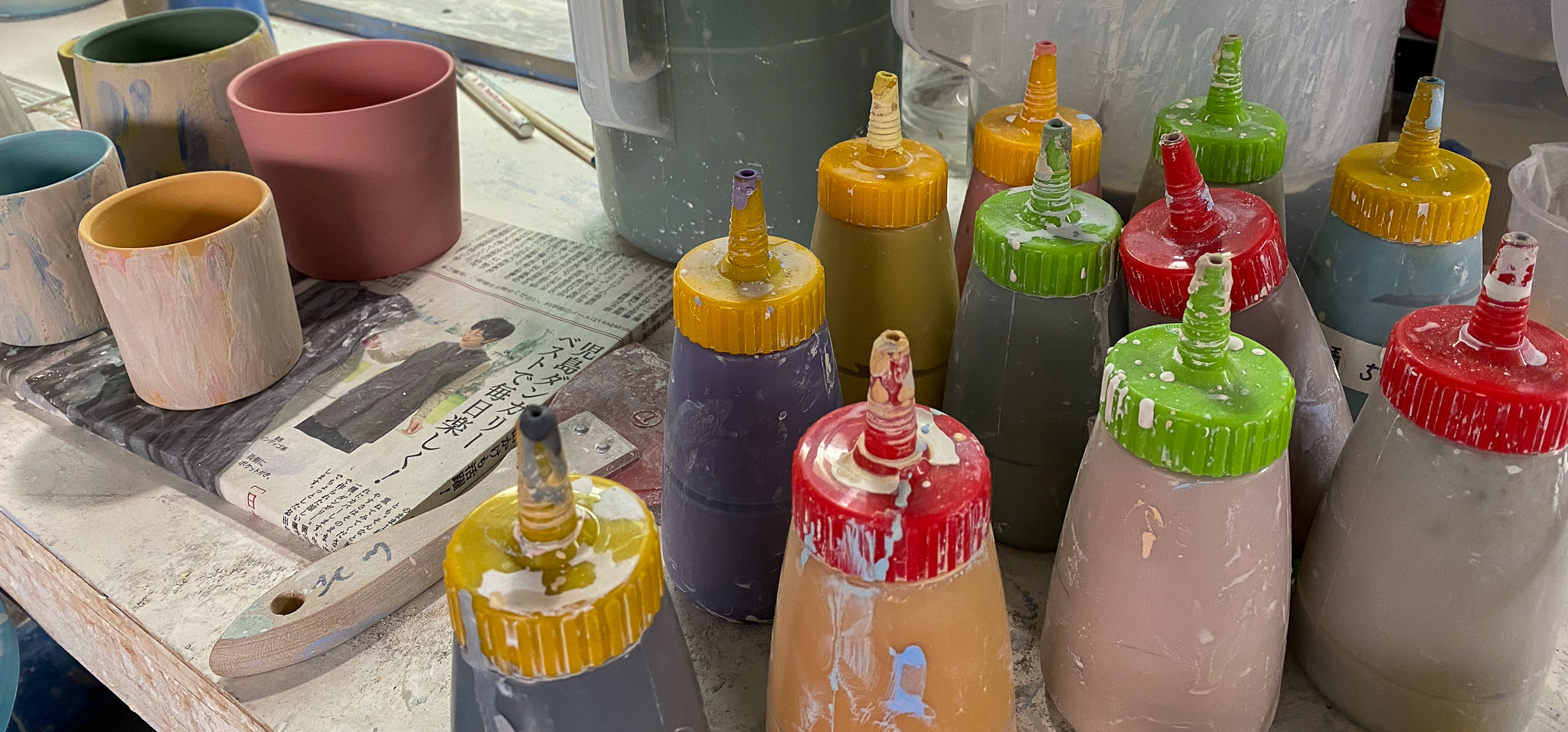
About casting
The plaster mold is fixed on the potter's wheel so that the slip does not leak out, and the core is removed. Simply put, the slip is poured into a plaster mold in the shape of a flowerpot, and when it dries, the flowerpot is formed.
Assuming I am making the work "Marble" which uses multiple pigments, I first prepare a slurry by mixing multiple pigments (white, blue, light blue, etc.).
The container is tapped to remove any air bubbles from the slurry, and the slurry is poured into the mold. The color only settles the moment the marble touches the mold. After that, the mixture blends in and the inside of the mold is barely colored. Pour slowly to the very edge of the nozzle and observe the condition for about 10 minutes. This is what is called shaping on the potter's wheel, and it creates the shape of a flowerpot.
While you wait, the water in the slip is gradually absorbed by the plaster, and after 10 minutes the slip has thickened to a thickness of about 5 to 8 mm, at which point you can turn the mold upside down and dump all the excess slip into a container. This is why it is called "gaba casting."
After leaving it for about 30 minutes after casting, the plaster mold is removed by gently tapping it with your hands or vibrating it. Once removed from the mold, excess casting opening is cut off and the cut surface is processed with a sponge or similar. If it is left cut, it may crack when drying, so it is important to be careful. Only the outside shape is the same as the mold, while the inside is slightly rounded.
This completes the molding.
For most designs, the foot can be taken in the same shape as the mold, and for some pieces, there is no need for scraping; the mouth is finished and the shape is completed, and the piece is fired as is. Since the piece is already colored with pigments, there is no need to apply a glaze after bisque firing. The piece is fired in a single gong-firing. (However, many pieces are glazed only for vessels and vases, so in those cases they are glazed after bisque firing and then gong-firing.)
Although I can adjust the color, I cannot perfectly reproduce a pattern, so I create each piece thinking of it as a one-of-a-kind piece.
In addition to marble, I can also create rain-like patterns by pouring a small amount of pigment into a mold using a tube beforehand and then pouring in the slip, which I use to create my artwork. 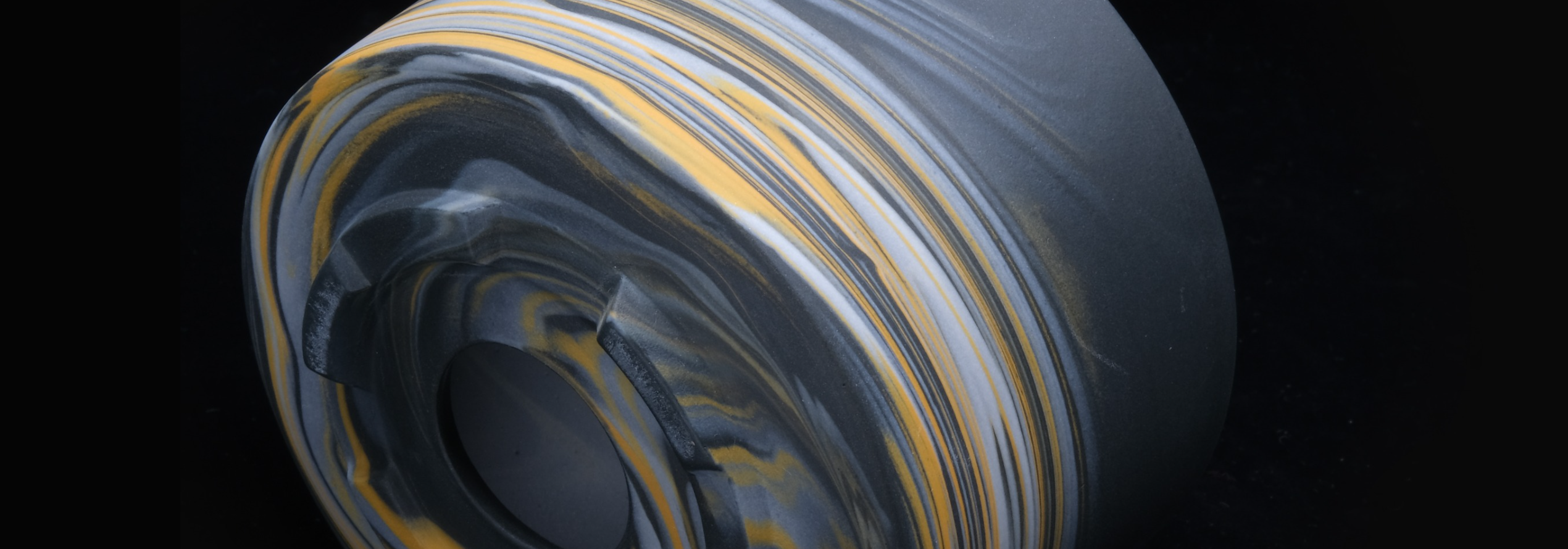
About overlapping colors
The above casting process is repeated 3-4 times with a single color, resulting in a layer of 3-4 colors. After one casting, it is removed and carved out using a plane while still half-dried. The color that emerges depends on how deep the layer is carved out. In other words, the color you want on the outermost side is poured in first, and once it dries, the second color is poured in, and so on. The last color poured in is the color for the inside. I've explained it very simply, but the number of steps is much greater.
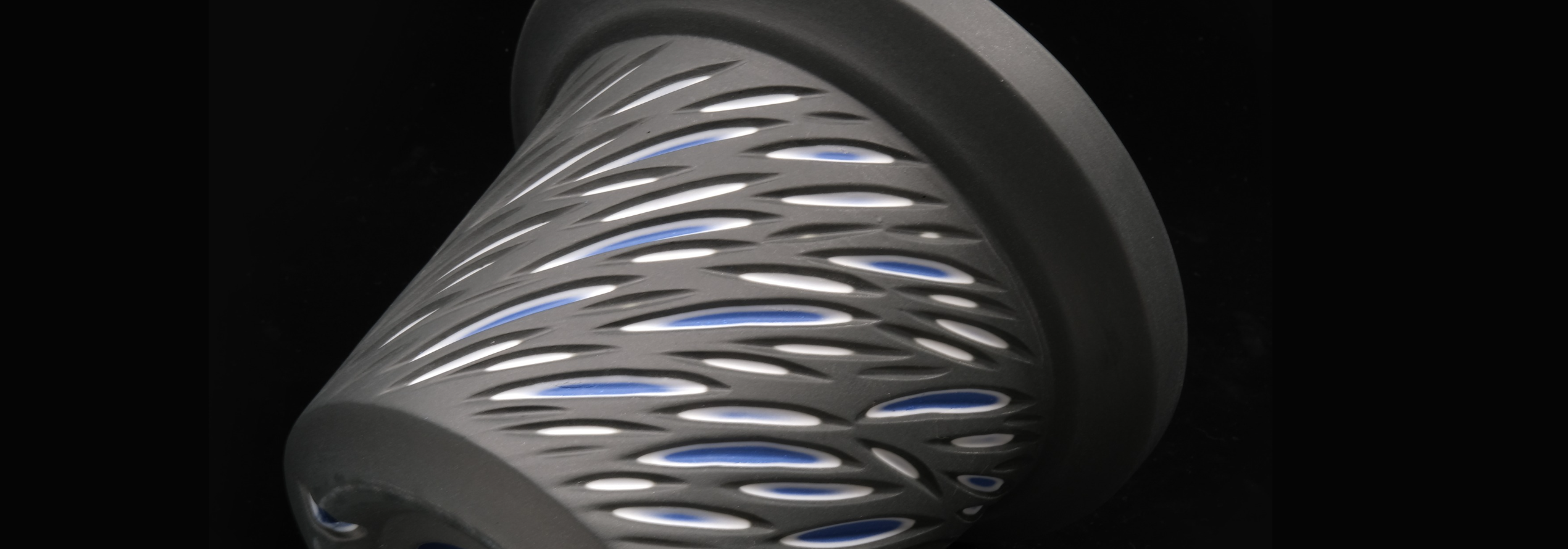
About types
In my case, I make the prototype out of plaster.
Powdered plaster is prepared and mixed with water to cause a chemical reaction, and the plaster begins to harden. Just before it hardens and dries, it is quickly carved away with a plane in a rough manner. It is similar to carving out a hole. The shape of the foot is also carved away at this time.
When making a rotating object, the plaster is carved with a plane on a potter's wheel, but in the case of a flower pot, it is sufficient to make only the outer surface, so the inside of the plaster is carefully carved away.
Making the prototype and mold is the most difficult and labor-intensive part of the entire process. Currently, we have over 50 different shapes, and I think we have 100 to 150 molds in total, but I have never counted.
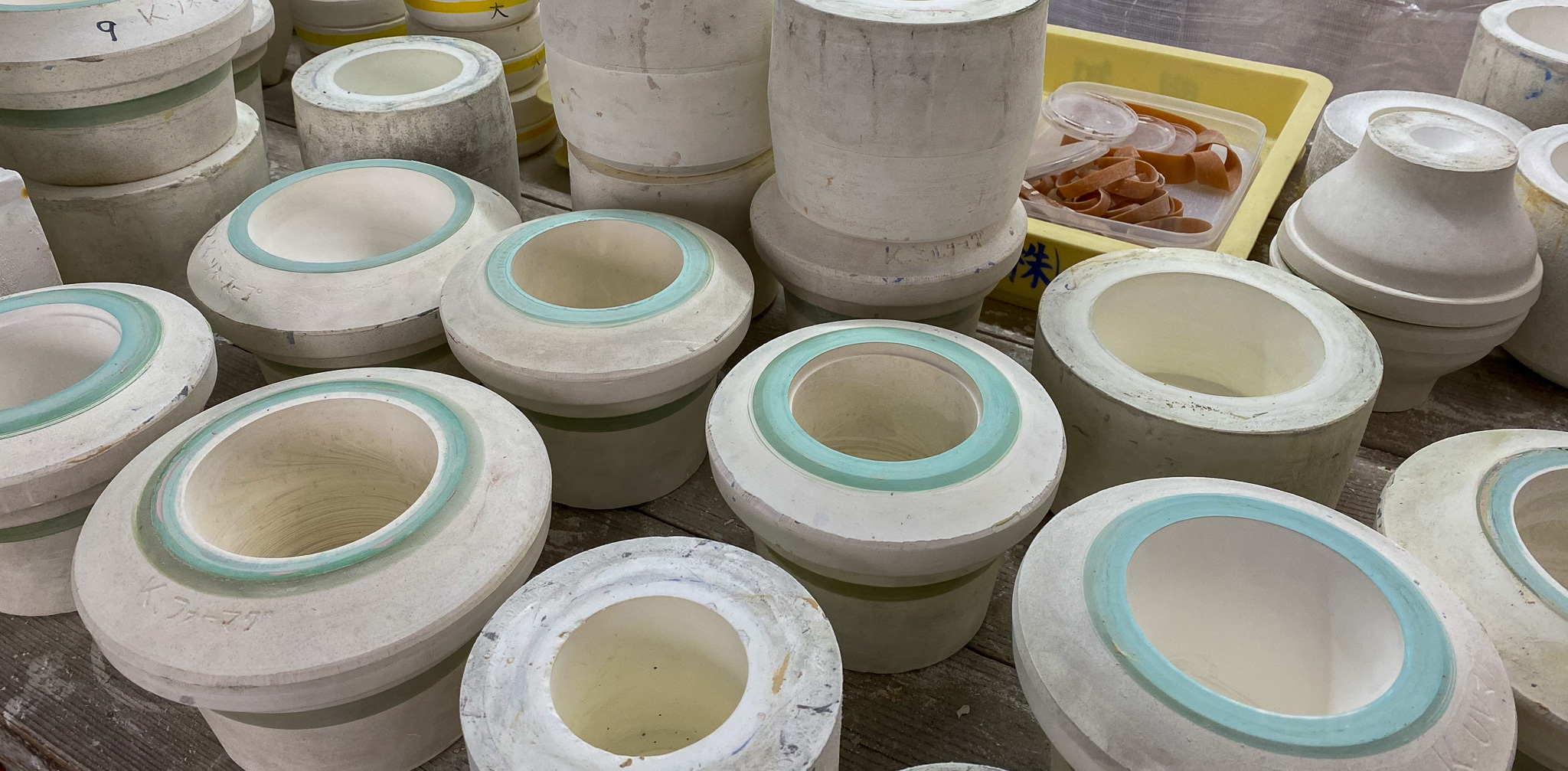
Please tell me about the four seasons in Tajimi.
Tajimi is a basin, and as is often reported in weather forecasts, it is hot in the summer and cold in the winter. If you just look at the temperature, it seems like it would be pretty tough.
The heat in the summer is extraordinary, often approaching 40°C. Kyoto, where I'm from, is also hot, but here it's on a whole different level.
However, when I am working on pottery, the summer heat is just hot, so it is not that much of a problem, but in the winter, when there is not much snow, there are days when the temperature drops below freezing, and I am always worried that the clay will freeze, which affects my work. In winter, I cover the entire studio with plastic to keep out the cold, like a greenhouse.
I guess the easiest times to work are from late summer to autumn and spring.
Tajimi is an artist-friendly place where you can rent or choose your own kiln, there are pottery spaces, and it's a pretty easy place to get started if you want to become a potter.
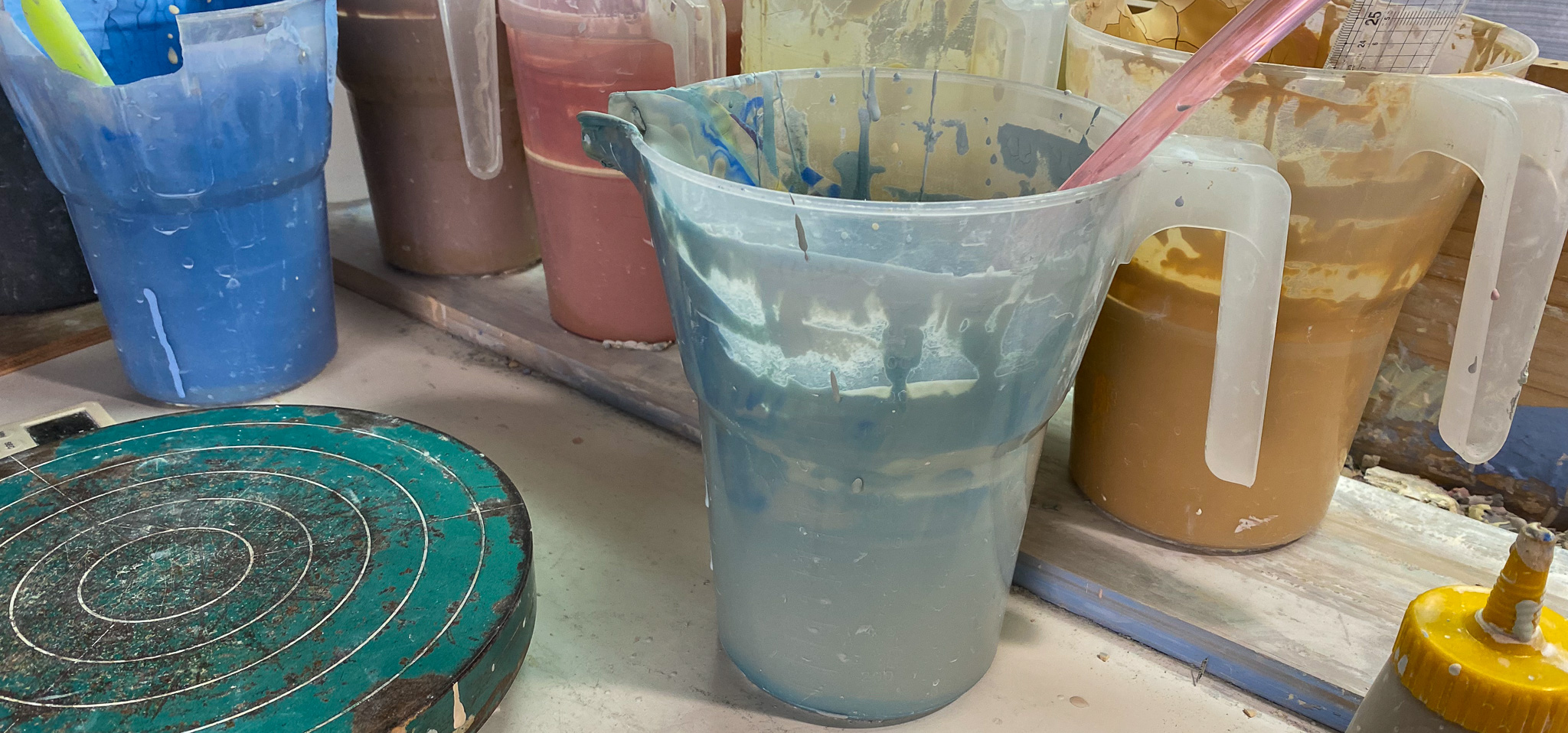
OMBLE:
Thank you for reading to the end.
I also use "Marble" which stands out for its unique handmade nature, made by mixing pigments one by one, and the calm heavy colors created by layering and carving bright colors, both of which I use privately. They are very easy to use and look great. The glass-like porcelain feel that is unique to casting is very stylish. Please pick up a piece and add it to your collection.
